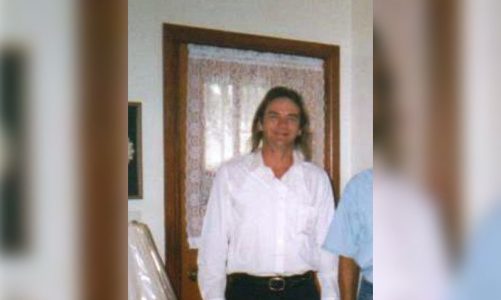Press Release From The Springfield Police Department
Oct. 21, 2021
Springfield Police Chief Paul Williams Provides Comprehensive State-of-Policing Update at City Council Retreat
On Oct. 20, 2021, Springfield Police Chief Paul Williams presented during the Springfield City Council retreat at the Lake Springfield Boathouse (2312 Lake Springfield Park Rd.). Chief Williams provided information on three topics: crime in Springfield over the last 20 years, updated crime prevention strategies and police performance measures. He also briefly spoke about recruitment efforts; currently, SPD is on track to meet its 2022 recruitment goals.
Top takeaways from the presentation:
A look back over 20 years illustrates that although Springfield’s overall crime rate has not significantly increased despite continued population increases, Chief Williams acknowledged that the department considers it too high and is taking active and innovative steps to reduce it. A recent increase in violent crime, largely due to a trend of higher gun violence in Springfield, is a particular area of concern and focus.
To reduce crime, proactive prevention is the goal. Every member of the community plays a vital role in crime prevention, especially considering community-wide matters such as drug abuse and poverty contribute to instances of criminal activity. Neighborhood engagement also has the potential to prevent crime by increasing place attachment and quality of life by up to 60%. The President’s Task Force on 21st Century Policing outlines five ways stakeholder groups (local government, law enforcement and communities) can work together to prevent crime (see slide 9).
Crime prevention and reduction also requires buy-in from stakeholders throughout the criminal justice system, including judges, county commissioners, City government, police, Sheriff’s Office, and attorneys. To bring them all to the table, Chief Williams is in the process of reconvening the Criminal Justice Coordinating Committee (CJCC). The CJCC will provide an avenue to discuss and find solutions to issues related to crime in our community (see slide 113).
The SPD’s focus regarding crime prevention within the city is a data-driven approach (see slide 50). The department utilizes data to educate officers about crimes occurring in areas throughout the city so they can focus on hotspots and persons of interest and is working to enhance and improve those efforts. The priority is directing available resources effectively and efficiently, pre-emptively reducing the opportunity for crime to occur. Two new tactics the department will employ to improve those efforts are Data-Driven Approach to Crime and Traffic Safety (DDACTS) (see slide 51) and the newly funded Risk Terrain Modeling (RTM) which will Identify environmental conditions and features of the landscape that lead to opportunities for crime (see slide 52). Another example is the increased use of Crime Prevention Through Environmental Design (CEPTD), which uses urban and architectural design and the management of built and natural environments to prevent crime from occurring.
The department has also utilized historical data to identify four types of crime, one per quarter, that significantly increase during those timeframes. In January 2022 the SPD will implement an enhanced crime prevention strategy to focus on increasing awareness, education, and prevention of those crimes: Q1 stolen vehicles, Q2 residential and commercial burglaries, Q3 vehicle break-ins and Q4 robbery (see slide 54).
Technology plays an invaluable role in crime prevention. The SPD currently utilizes a variety of technologically advanced tools to prevent and investigate crime, and additional resources will be deployed in the coming months. The department is continually exploring best practices from across the country that could be implemented in Springfield to enhance those efforts (slide 66).
A co-responder Mental Health Mobile Response Team will soon be implemented. Working with local agencies, the program will partner Crisis Intervention Team (CIT) officers with a mental health professional to jointly respond to non-violent incidents involving a mental health crisis (See slide 131).
Finally, the SPD is currently experiencing a shortage of officers (41 vacant sworn positions). Low staffing allows little time for officers to take breaks during their shifts or proactively patrol the community. According to the International Association of Chiefs of Police best practice model, 30% of a patrol officer’s time should be dedicated to responding to calls for service, 30% should go toward proactive measures, (i.e., officer-initiated activities including traffic stops and preventative patrol), and 30% of officer shift time should be dedicated to administrative duties, (writing reports and taking breaks), leaving 10% flex time to be utilized in any of those ways. Due to current staffing levels and call load however SPD officers are spending, 84.89% of their shift time responding to calls for service, 13.83% is available for proactive patrol efforts, only 1.28% of their time is left to complete administrative tasks, and no time flex time is available (see slide 137). To address these issues, effective Jan. 2, 2022, officers will move to 12-hour shifts (current shifts are 10 hours). The change will provide more officers on the street, reduce individual officers’ workload, and allow more time for proactive enforcement activities (see slide 139).
The PowerPoint slides can be found here: https://www.springfieldmo.gov/DocumentCenter/View/55868/SPD-Policing-Plan-2021
The entire recorded presentation will be available on Oct. 22nd and can be viewed here: https://cityview.springfieldmo.gov/.
###
Media Contact: PAO Jasmine Bailey
417-864-1786
JnBailey@Springfieldmo.gov
Release authorized by Chief Paul Williams



